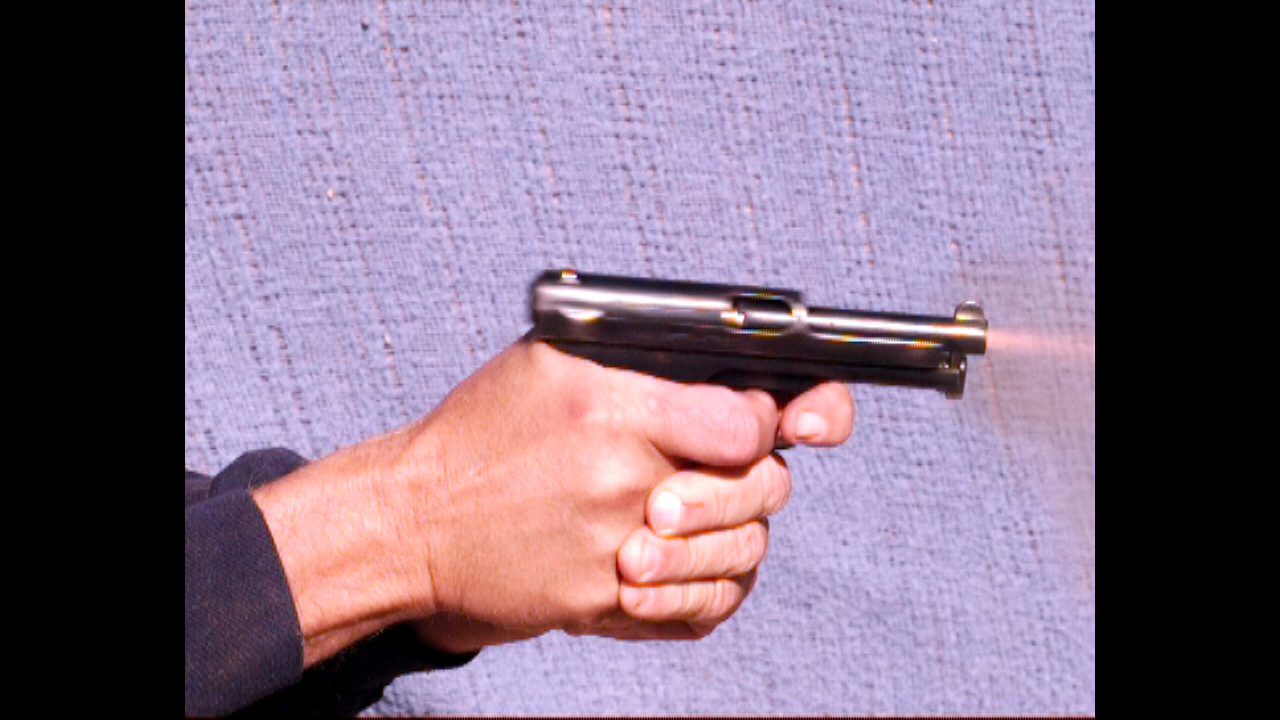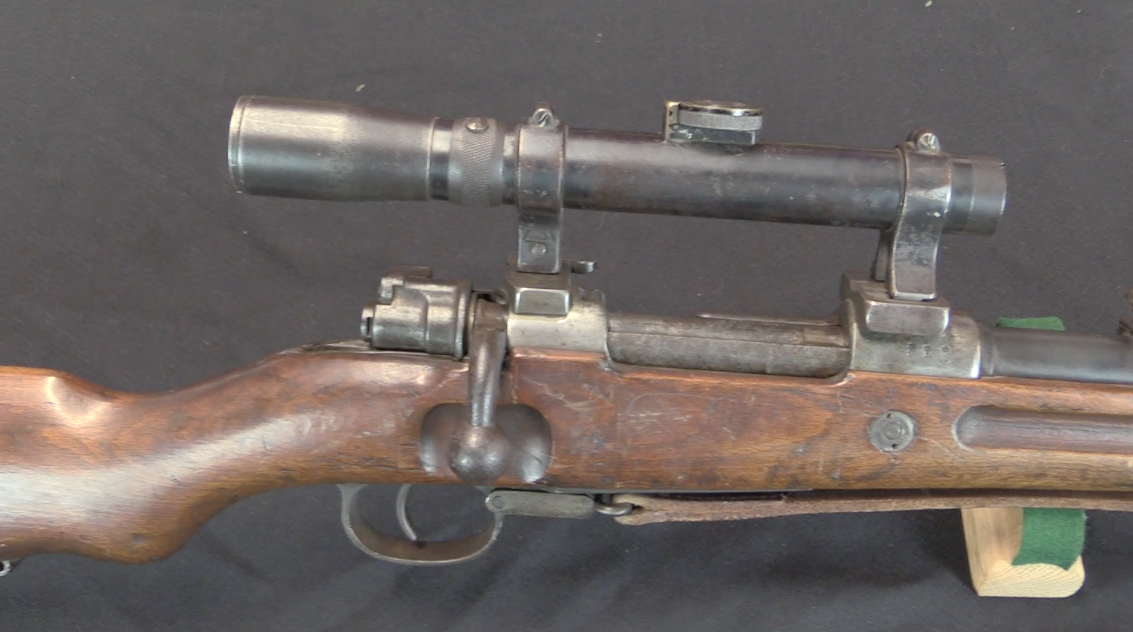Of the three calibers available in the 1896 model Bergmann pistol, the 6.5mm No.3 was the most popular. Approximately 4,000 of these guns were produced, and they found a worldwide following. The No.3 pistol was pretty much identical in concept to the 5mm No.2 Bergmann, but scaled up for the slightly larger 6.5mm cartridge. The No.4 was on the same frame as the No.3, but chambered for a larger still 8mm cartridge, and only a few hundred of these were made.
R.K. Wilson grants the 6.5mm Bergmann with “appreciable stopping power” (particularly with the lead bullets), and rates it much superior to the .25 ACP (which was not introduced until 1905). That may be setting the bar pretty low today, but it was a respectable achievement for a safe and reliable pocket pistol in 1896. In terms of design, the No.3 Bergmann did use a dust cover over the ejection port, which reciprocated automatically with the bolt. The smaller No.2 did not include this feature. In addition, shortly after the beginning of No.3 production the method of retaining the barrel was changed. Early examples use a retaining screw and a lug on the barrel, but the lug was changed for a fully threaded barrel fairly quickly. In these models, removing the barrel requires removing the retaining screw and then unscrewing the barrel. Since the retaining screw holds it in place and maintains headspace, the barrel does not have to be torqued down when installed – thus making is still easy to remove for cleaning.
Bergmann was willing to accommodate quite a few design alterations, including different barrel lengths, different grips, shoulder stocks and even things like set triggers for target shooting. We will look at examples of all these features…




Is the /14 nomenclature on the 8mm pistol plausibly the barrel length in calibres? That would be about 132mm, and the same nomenclature is used on some European artillery.
A lot of US naval guns , too. Witness the 5 Inch / 50. Five inch bore and 50 caliburs barrel length. Also in the development of the M2 HMG the barrel was originally 56 caliburs for ballistic efficiency but reduced to 36 caliburs for portability.
I’m pretty sure the M2 barrel is significantly longer than 18″. Wikipedia claims 45″, about 90 calibers. Or is there an M2 other than the 50BMG one I think of?
Another guess. What if it’s a 14 grain charge of black powder? For instance the contemporary 8mm French Ordnance round was 12.2 grains, well according to Wiki.
I think you mean 112mmm {8×14} or about 4.5 inches;. Looks about right.
That system is very common for designating the barrel length of rifled artillery. The Italian Royal Army even used it in their official designation of artillery pieces (e.g. “Obice da 149/12 Mod. 14” was a WW1 era 149mm howitzer designed by Krupp). The problem was that prior to NATO there was no common standard on what the lenght of the barrel actually meant. In some countries it was just the rifled part of the barrel, but in others it included the chamber and sometimes even the muzzle break if there was one.
Thank you for going into such detail on the Bergmann pistols. I have always enjoyed John Wayne’s Big Jake because his son Michael carried one. I especially enjoyed te set trigger. I have shot muzzle loaders with double set triggers for many years. About ten years ago I was looking for a new hunting rifle and stumbled into a Mauser sporter that had a single set trigger. I really wanted that gun but chose a Ruger No. 1 in 25-06 instead. I have often regretted not buting the Mauser just for the trigger if nothing else. Keep up the good work.
Set triggers tend to be bad for people who don’t know basic safety. The set trigger is also nicknamed the hair trigger for a reason… or am I wrong?
When I hear “hair trigger” I think of any trigger with extremely light pull weight and short travel. While it’s true that most set triggers are in that category, there are also plenty of non-set triggers that qualify as well.
If memory serves, that was a P38 mocked up to look like a Bergmann. Still, someone cared enough about both authenticity and originality to try to be period-correct without resorting to using a C96.
Since the German word for “miner” is “Bergmann”, the little figure makes sense — like the horse on Colt’s guns.
Ok, off on a tangent. Bergmann translates to mountain man or perhaps man of the mountain, right? Maybe the little dude in the logo is a Germanic dwarf? You know, down below ground, digging away…..
“digging”
http://unblinkingeye.com/Guns/Berg/berg.html states that:
“Bergmann” means “mountain man” and by extension “miner.” The logo Bergmann used on his pistols was a miner.
The trigger on the target pistol is quite interesting. Patent US802,582 (1905) by Bernhard Mueller describes a “sear-hammer” which seems conceptually similar, but a totally different mechanism. FW did a video, courtesy of the same generous collector on the 1902 Mueller prototype.